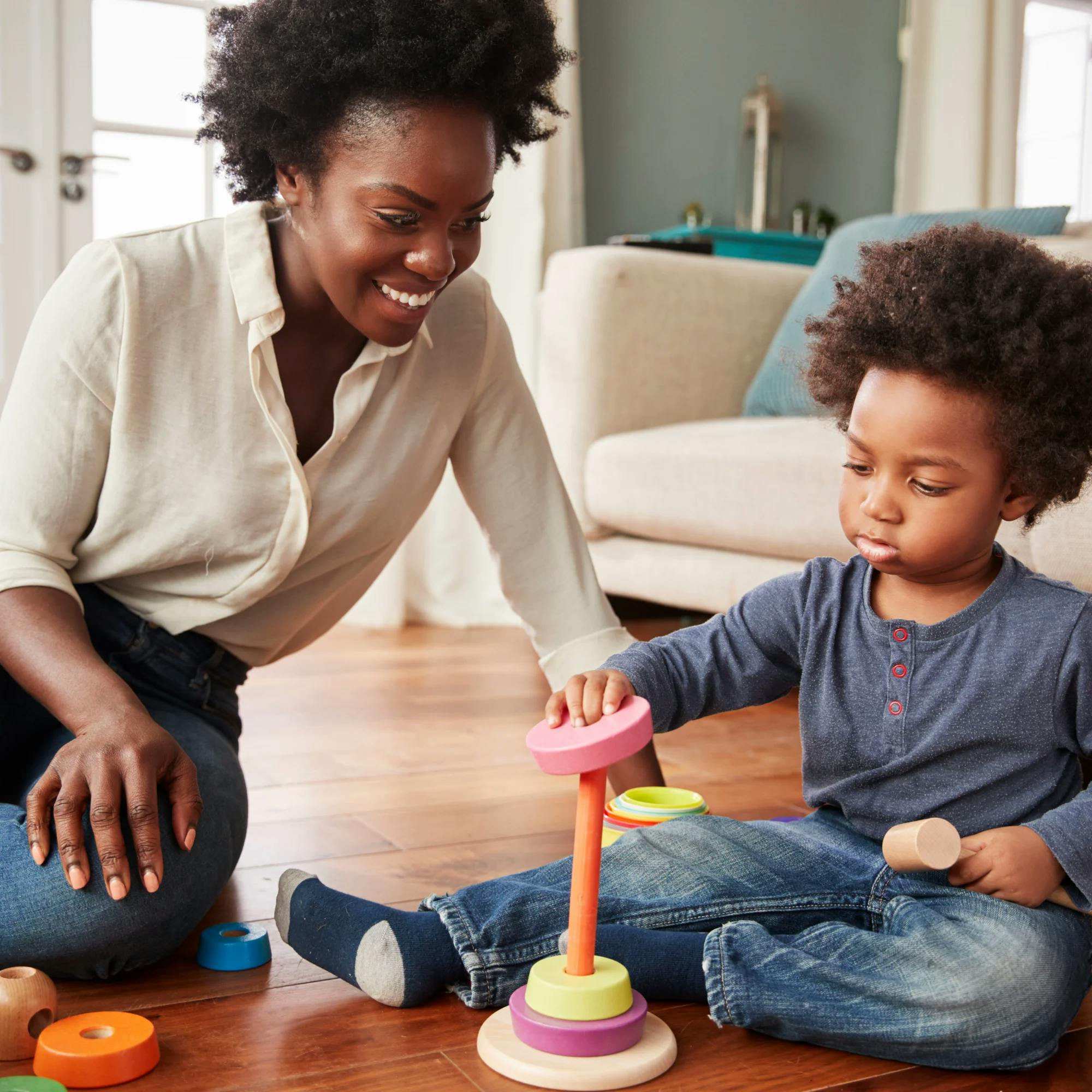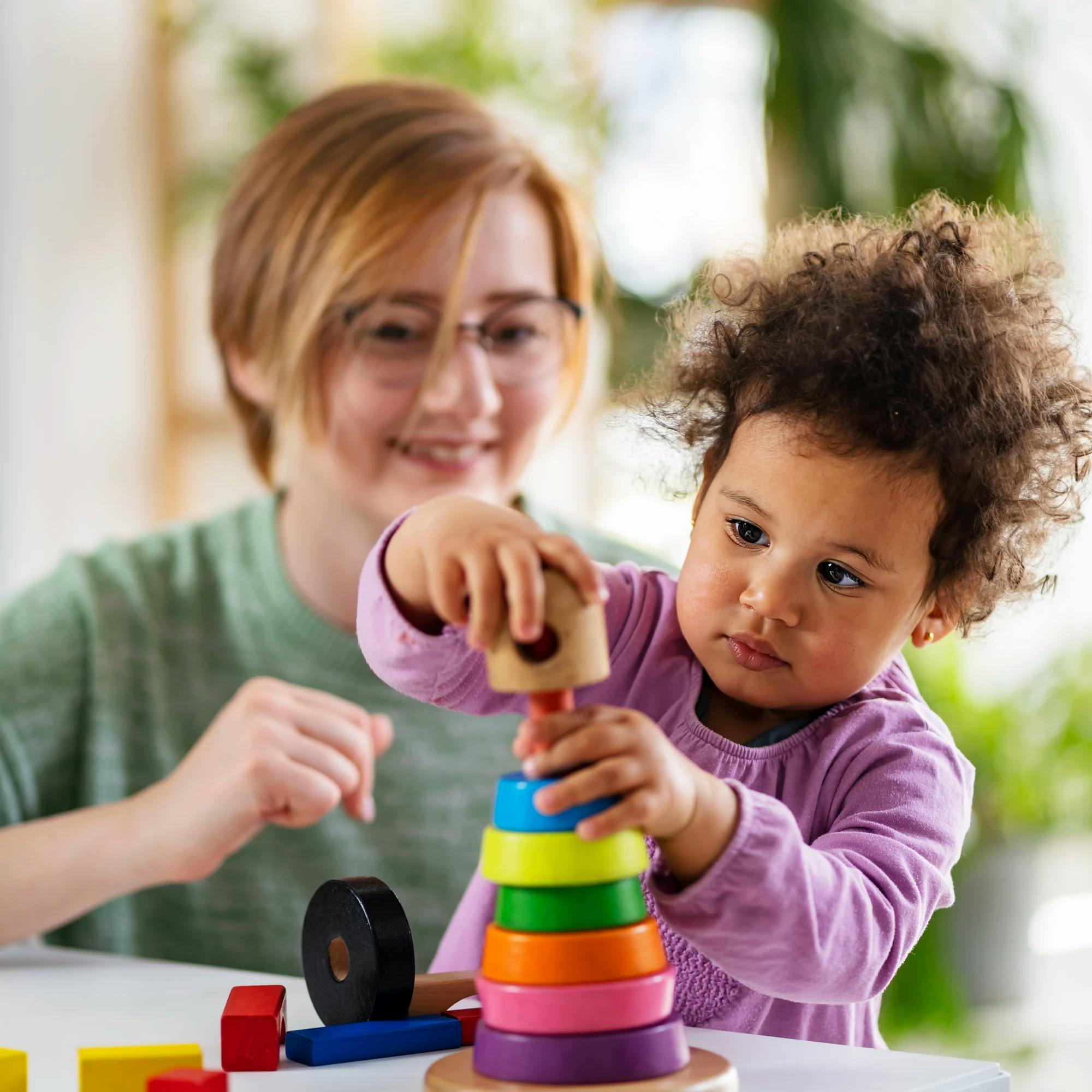Autism is related to differences in the brain. Because of those differences, autistic people may communicate, interact, behave, and learn in ways that are different from neurotypical people.
For children with autism, communication development happens differently and more slowly than in neurotypical children. Some autistic children have a speech delay or trouble talking.
In this article, we discuss the communication signs of autism and what they might look like in everyday life. We also explain how speech therapy and AAC devices can help autistic kids communicate more clearly, in ways that feel authentic for them.
Personalized care for your child
We support autistic children for who they are and help them build new skills. Get matched with a licensed speech therapist today.
 Get started
Get startedCommunication signs of autism
As mentioned, autistic people often have differences in the way they communicate. Autism is referred to as a spectrum disorder, so those differences can vary from person to person. However, it’s common for autistic children to have some limitations in verbal communication. This might be related to the number of words they say, or to their social communication skills–the ways they interact with other people.
Some signs of autism related to speech and language include having difficulty with:
Understanding and using gestures like pointing or waving
Comprehending and using spoken words
Following directions
Reading and writing—some children with autism read early but don’t understand what they read (this is called hyperlexia)
Having conversations
Autistic children may also:
Stop using words that they used to say
Be hard to understand
Repeat words or phrases heard recently or weeks earlier (this is called echolalia; children who do this may be gestalt language processors)
Use a more robotic or more songlike speaking voice
Talk very little or not at all
Use behaviors instead of words or gestures to communicate their needs


How do autistic people communicate?
No two autistic people will communicate the same way. Everyone’s strengths and differences are individual to them. However, there are a few ways we can categorize how a person with autism might communicate.
Expressive language in autistic children
Autism can affect talking. Many autistic kids have difficulty with expressive language. This refers to how they use verbal words (and even nonverbal gestures) to communicate.
Let’s take one scenario and look at some examples of how autistic children might respond, depending on their communication skills. Let’s say a child wants their milk, which they see sitting on the counter. They can’t reach the drink themselves.
A child who doesn’t have many verbal words, or the ability to point, may scream, cry, or show other “big behaviors.”
Another child may vocalize by making a sound or trying to say “milk” or “cup,” even if it isn’t very clear.
Or, a child who might be old enough to use full sentences may only use a short phrase (“want milk”), or even a single word.
Keep in mind, these are just a few general examples. But they illustrate some of the ways autistic children may have trouble talking.
Receptive language in autistic children
Autistic kids may also have challenges with receptive language. Receptive language refers to how a person understands what’s said to them. Let’s look at some everyday examples of how this may appear in autistic children.
Some autistic kids have difficulty understanding all the words in questions people ask them. So if someone asked, “What do you want to play?,” they may not understand the question, and they may have a hard time responding.
Children with autism may also have difficulty following directions. So if someone said, “Go get your shoes and backpack,” they may not be able to follow through, or they may need a lot of support to be able to complete the directions.
Autistic kids may also have trouble identifying objects. You might see this when reading with your child, for example. If you say, “Where's the dog?” while reading a picture book, they may not know where to point.


Social communication in autistic children
Social communication skills are often affected for autistic individuals. Social communication can also be called pragmatics. It refers to many of the nonspoken aspects of how people communicate and interact with others.
Differences in social communication can present in several ways. Here are a few examples:
Some kids may prefer to play by themselves. They may have difficulty participating in tasks that require two people to interact, such as throwing a ball back and forth, playing tag, or playing pretend games, like playing “doctor.”
Autistic children may have difficulty identifying how other people feel. This can make some interactions challenging. They may have a hard time making and keeping friends.
Participating in conversation may also be tough for autistic kids. They may not be sure how to start a conversation, ask questions and comment, or stay on topic. This may be especially true if the topic doesn’t interest them. Autistic individuals often have specific interests that they prefer talking about.


How AAC can help autistic kids communicate
As of 2018, about 25% of autistic children are nonspeaking or use words sparingly. For autistic people who are nonverbal, there are many ways to communicate besides speech.
The terms “nonverbal” or “nonspeaking” usually mean that a person has challenges with expressive language. Talking is one form of expressive language, of course. But a nonverbal child can use expressive language by using augmentative or alternative communication, known as AAC. AAC can include gestures, picture communication boards, speech-generating devices, and more!
Some people use AAC temporarily. Others use it successfully throughout their life. The role of a speech therapist is to support people’s communication abilities in whatever ways work best for them and their families. We can continue to help a child learn to talk while they use AAC to communicate. In fact, studies have shown that using AAC supports the development of spoken language!
It’s important for people who use AAC to take it with them everywhere so they can communicate in everyday situations. It’s estimated that about 5 million people of all ages in the United States could benefit from the use of AAC!


How can speech therapy help autistic people?
According to the CDC, the most common developmental therapy for autistic people is speech therapy. One reason speech therapy is so valuable for autism is because it isn’t one-size-fits-all. A speech therapist creates personalized goals and treatment activities to support each autistic child's or adult’s communication.
The speech therapist will evaluate the person to determine where they can grow their speech and language skills, then work with them and their family to find the most authentic and effective way to communicate. Autistic children might focus on verbal communication skills, social interactions, or the use of AAC.
Every person deserves their voice to be heard–and to feel comfortable and confident with communicating. Speech therapy helps make that possible.
An important note: We believe that when speaking about any community as a whole, the best approach is to prioritize that community’s voices, needs, and preferences. Within the larger autism community, the current language preference is identity-first (e.g., "autistic children"), which is why we use that language in our content. Expressable is committed to listening to and learning from the populations we serve. If and when their preferences change, we’ll adjust our approach accordingly.
How Expressable Can Help
Concerned your child isn't reaching age-expected milestones? Looking for communication support from a professional? Expressable is a national online speech therapy practice serving children and adults. We treat all major areas of communication and feeding, offer flexible hours including evenings and weekends, and accept most major health insurance plans. We’re proud to have earned more than 3,000 5-star reviews from our clients (4.9/5 average).
Our therapy model is centered on parent and caregiver involvement. Research proves that empowering caregivers to participate in their loved one’s therapy leads to better outcomes. That’s why we combine live, 1-on-1 speech therapy with personalized education and home practice activities for faster progress.
Communication is more than words. It’s how we share how we feel and show who we are. We’re here to help you or your child do just that.

 Abby Barnes, M.S., CCC-SLP
Abby Barnes, M.S., CCC-SLP











